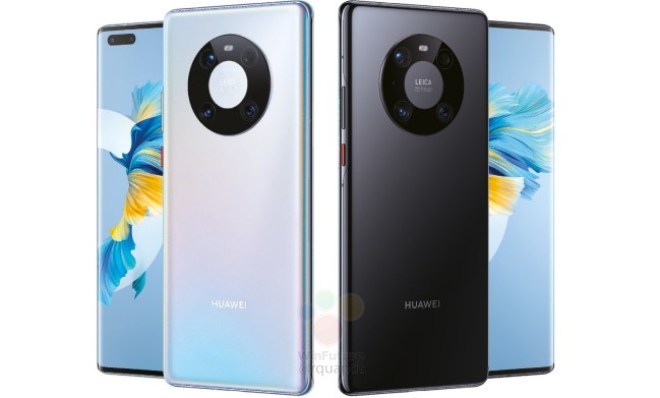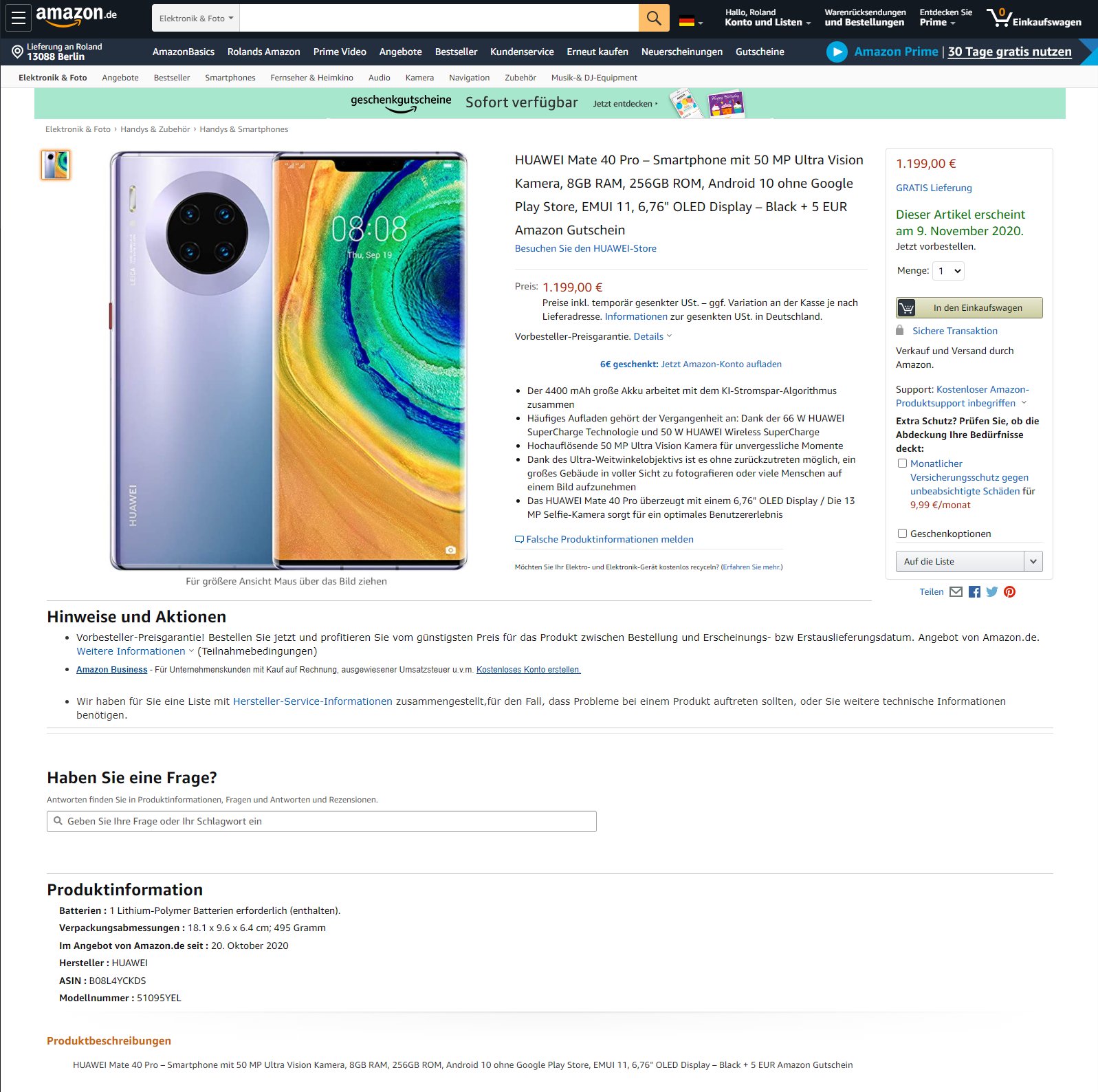Huawei will officially take the wraps off the much toutedest top flagship Mate 40 series next week. Ahead of the launch, the media has been awash with renders of the models in the series as well as some of the specifications. 
A first listing for the Huawei Mate 40 Pro has now appeared on Amazon Germany . The listing which has been pulled down gives the price of the Mate 40 Pro as 1,199 euros and also reveals that the flagship will start shipping on November 9, 2020.
The Huawei Mate 40 Pro is expected to feature a 6.76-inch OLED display that has a resolution of 2772×1344 pixels and thus achieves a pixel density of 456 PPI. We don’t yet know whether the screen supports an increased refresh rate.
Amazon Germany just listed the new Huawei #Mate40 Pro for sale at 1199 Euro: https://t.co/mElvIoXVAX
Specs and official pics: https://t.co/ENCKoSIbg8
— Roland Quandt (@rquandt) October 21, 2020
What is certain, however, is that the panel is strongly curved back at the edges, so that the impression of a borderless screen is created when the phone is viewed directly from the front. An optical fingerprint reader, which is supposed to unlock the smartphone quickly and reliably, is located directly under the display surface.
The HiSilicon Kirin 9000 is the last new high-end SoC manufactured by TSMC for before Huawei the US embargo came into force. The chip offers a total of eight cores, four of which use the ARM Cortex-A55 architecture and work with a maximum of 2.04 gigahertz.
In addition, there are three further high-end cores which, according to current knowledge, use the ARM Cortex-A77 architecture and offer a maximum clock rate of 2.54 gigahertz. On top of that, Huawei runs a fourth Cortex-A77 core with a maximum clock rate of at least 3.13 gigahertz, so that, according to the first benchmarks, the overall package offers more than sufficient performance that overtakes the current Snapdragon 865 Plus with similar clock rates.
In addition to the fast CPU cores, the chip also has an ARM Mali-G78 graphics unit, the Huawei-typical neural processing engine for processing data from the field of artificial intelligence and an integrated 5G modem, which is probably only in Sub -6 GHz networks. The Kirin 9000 is also the first SoC from Huawei that was manufactured on a 5 nanometer scale and thus offers an even narrower structure than its predecessor.
Huawei sells the Mate 40 Pro in Europe in only one version: this has 8GB of RAM and 256 GB of internal flash memory based on UFS 3.1, which cannot be expanded using a microSD card slot. In China, there will also be variants with up to 12GB of RAM. In addition, special editions are planned, including a Mate 40 RS and a “Pro +” model, which differ primarily in terms of adapting the design and the camera equipment.
Speaking of cameras, with the Huawei Mate 40 Pro packs three main sensors at the rear which consist of a 50-megapixel sensor with an F / 1.9 aperture and an optical image stabilizer, a 20-megapixel sensor for ultra-wide-angle shots with an F / 1.8 aperture and a zoom camera with 12 megapixels resolution and F / 3.4 maximum aperture size. Among other things, the camera system should be able to record 8K videos and offers a 5x physical magnification for zoom recordings.
In the pill-shaped cutout on the front of the Mate 40 Pro there is a 13-megapixel camera with an F / 2.4 aperture, which Huawei provides with a 3D sensor. In combination, this system should enable the smartphone to be operated with gestures, similar to what is already known from other devices. All the user has to do is move his hand over the display in order to interact with the phone.
The version intended for Europe of the Huawei Mate 40 Pro has a 4400mAh battery. Huawei always supplies a new SuperCharge power adapter, which is connected to the device via USB Type-C port (3.1 Gen 1) and provides a maximum charging power of up to 65 watts.
Huawei will offer the new Mate 40 Pro in black and silver in Europe. Other colors may be unveiled in China.
UP NEXT: POCO C3 for Rs 7,499 (~$102) brings 6.53-inch display, Helio G35, 13MP triple cameras and 5,000mAh battery







